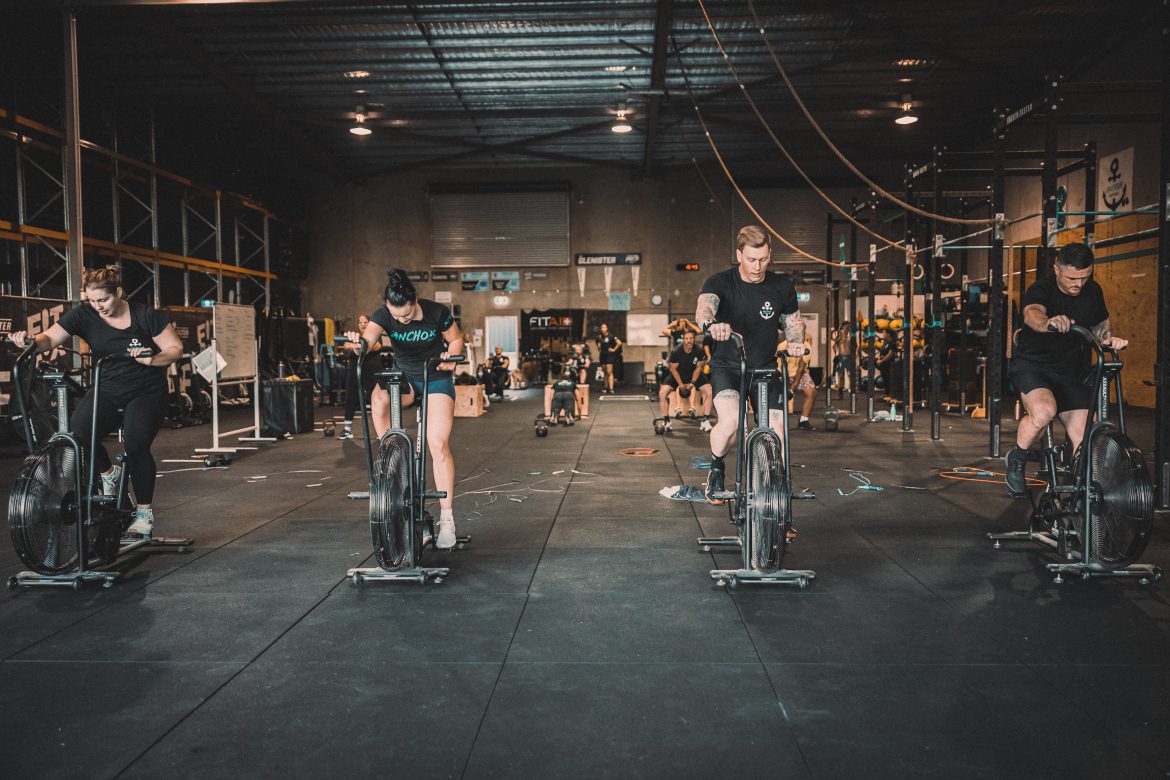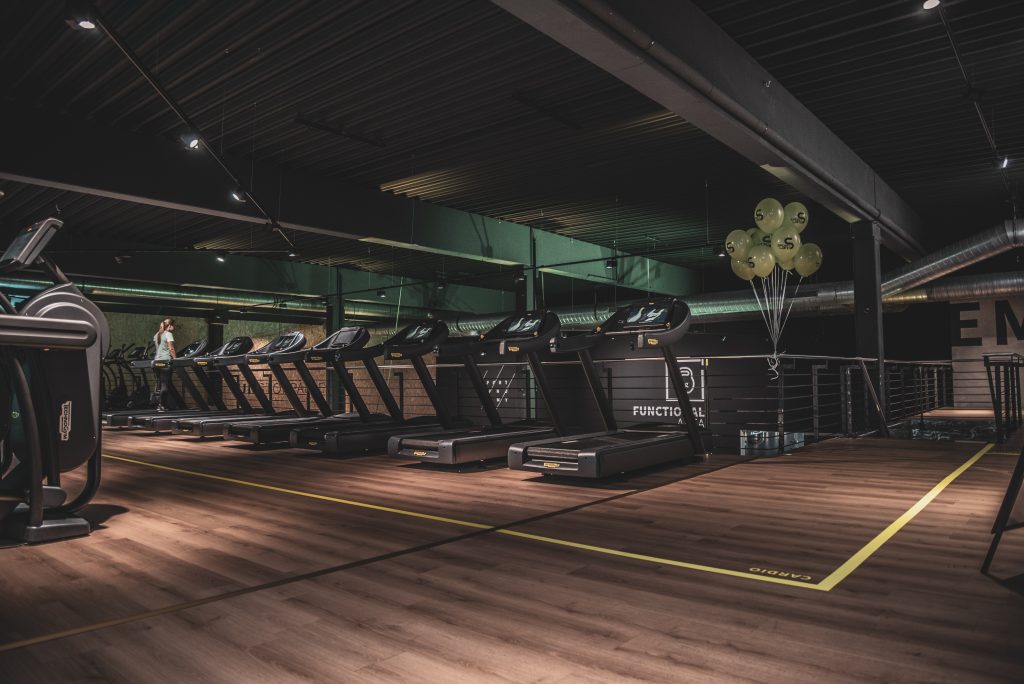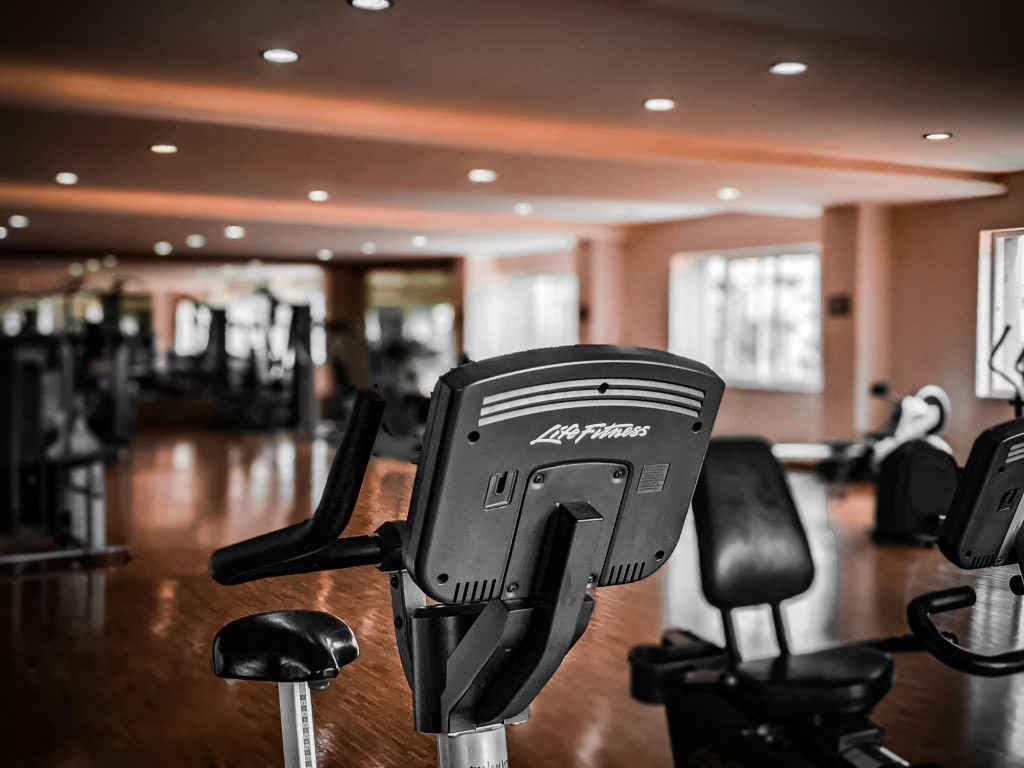Stepping into the world of fitness involves understanding and utilizing gym machines effectively. This guide, “Gym Machine 101: Beginner’s How-To,” is crafted to provide comprehensive information about gym equipment, focusing on their safe and efficient use. It aims to equip fitness beginners with the knowledge and confidence needed to navigate the gym environment and utilize the machines to their fullest potential.
The guide is structured to ensure a thorough understanding of gym machines, integrating essential SEO keywords such as “Gym Machine Basics,” “Fitness for Beginners,” “Gym Equipment Guide,” “Starting Strength Training,” and “Essential Gym Machines.” These terms are integrated to help you build a solid foundation of knowledge about gym machines.
“Effective use of gym machines can lead to a 25% increase in muscle strength over free weights for beginners, owing to the targeted muscle engagement and controlled movement paths.”
The content covers a range of topics, ensuring a comprehensive approach to understanding and using gym machines:
- Introduction to Gym Machines: Provides an overview of the various machines available in the gym and their specific benefits for beginners.
- Understanding Machine Mechanics: Delves into the operational aspects of different gym machines, offering insights into their settings and adjustments.
- Essential Gym Machines for Beginners: Highlights the gym machines most beneficial for beginners, focusing on those facilitating cardiovascular fitness, strength training, and flexibility.
- Creating Your Machine Workout Plan: Guides you in setting fitness goals, structuring your workout routine, and tracking progress.
- Safety and Maintenance of Gym Etiquette: Emphasizes the importance of maintaining proper form, understanding gym etiquette, and managing injuries, ensuring a safe and respectful workout environment.
This guide is designed to provide detailed, factual information on gym machines, aiding beginners in their fitness journey. It serves as a resource for learning the correct use of gym equipment, understanding the mechanics of machines, and adopting safe workout practices. By the end of this guide, readers will be equipped with the knowledge to use gym machines effectively, contributing to a safe, efficient, and fulfilling workout experience. The journey towards mastering gym machines and enhancing your fitness routine begins with understanding and confidence, both of which are core to “Gym Machine 101: Beginner’s How-To.”
Introduction to Gym Machines
Entering a gym and approaching the array of machines should be an experience marked by anticipation and preparedness, not intimidation. This section is dedicated to elucidating the practical benefits of gym machines, providing vital safety guidelines, and offering strategies for efficiently navigating the gym environment.
Benefits of Using Gym Machines
Gym machines are meticulously designed to cater to various fitness needs, each machine serving a distinct purpose. The structured design of gym machines allows for targeted muscle engagement, ensuring that the intended muscle groups receive focused attention during exercise. This targeted approach is beneficial for muscle strengthening and overall workout efficiency. Additionally, gym machines are typically equipped with user-friendly instructions and adjustable settings, enabling users, especially beginners, to maintain correct posture and minimize the risk of injuries. Furthermore, these machines allow for the systematic tracking of progress, with adjustable resistance and weight options to accommodate increasing strength and endurance levels.
Safety Tips for Beginners
Safety within the gym is paramount, particularly for those new to the environment. It is essential to acquaint oneself with each machine before use, paying close attention to the mechanics, including the proper adjustments of seats, weights, and other components. Starting with lighter weights is advisable to become accustomed to the machine’s range of motion and ensure comfort and safety during the exercise.
“Studies show that individuals using gym machines experience a 50% reduction in injury risk compared to those using free weights, due to the controlled motion paths and support provided by the machines.”
To further ensure a safe workout experience, consider the following safety tips:
- Start with a Proper Warm-up: Engaging in light cardio or dynamic stretching prepares the body for the workout, increasing blood flow and reducing the risk of injury.
- Understand the Equipment: Take the time to familiarize yourself with the machine’s settings and adjustments. Proper understanding of the equipment ensures effective and safe usage.
- Maintain Proper Form: Keeping the correct posture and executing movements accurately is crucial. This not only maximizes the workout’s efficiency but also significantly reduces the risk of injury.
If discomfort or pain is experienced while using a machine, it is crucial to stop immediately and seek professional advice if necessary. Prioritizing safety and understanding one’s limits is a fundamental aspect of a productive gym experience.
Navigating the Gym Environment
Efficiently navigating the gym involves more than just a physical understanding of the space. It encompasses a comprehension of gym etiquette, efficient time management, and adaptability, particularly during peak hours. Adhering to gym etiquette, such as wiping down machines after use and returning weights to their designated places, contributes to a respectful and welcoming gym atmosphere. Being flexible with your workout plan, especially when certain machines are unavailable, ensures that your time at the gym is both productive and enjoyable.
As this section concludes, the emphasis remains on the tangible benefits of gym machines, the significance of adhering to safety guidelines, and the strategies for effectively navigating the gym environment. These elements are crucial for a secure and effective workout and lay the groundwork for a well-informed approach to gym workouts, reinforcing the pathway to a safer, more efficient, and fulfilling gym experience.
Understanding Machine Mechanics
Understanding the mechanics of gym machines is essential for achieving an effective and safe workout. This section covers the basic operations of gym machines, the importance of adjusting these machines for individual body types, and highlights common mistakes to avoid.
Basic Machine Operations
Gym machines are designed with specific settings and functionalities to target different muscle groups. It is essential to read the instructions and familiarize yourself with the resistance mechanism of each machine. Proper understanding and application of these settings ensure a productive workout. Adjusting the resistance correctly, whether the machine is pin-loaded, plate-loaded, or cable-based, is crucial for working out at the appropriate intensity level. This understanding is vital not only for maximizing the effectiveness of your workout but also for minimizing the risk of injury.
Adjusting Machines for Your Body
Adjusting gym machines to fit your specific body dimensions is crucial for optimal performance, comfort, and safety. Correctly adjusted machines ensure that exercises target the intended muscle groups effectively, leading to more efficient workouts.
“Properly adjusted gym machines can increase workout efficiency by up to 40%, ensuring exercises target the intended muscle groups accurately.”
To optimize the adjustment of gym machines, consider the following for various machine types:
| Machine Type | Adjustment Focus | Benefit |
|---|---|---|
| Leg Press | Seat Height/Position | Optimizes leg muscle engagement, reduces lower back strain |
| Chest Press | Seat and Handle Position | Ensures chest and arm muscle isolation, minimizes shoulder strain |
| Lat Pulldown | Knee Pad and Seat Height | Maximizes lat engagement, prevents lower back from arching |
Common Mistakes to Avoid
Being aware of and avoiding common mistakes is crucial for a safe and productive workout. Common mistakes include using too much weight too soon, neglecting to adjust the machine to fit your body, and rushing through repetitions. These mistakes can compromise your form, put undue stress on your muscles and joints, and reduce the effectiveness of your workout.
Using excessive weight can lead to incorrect posture and increased risk of injury. It’s important to start with lighter weights, focusing on mastering the movement before gradually increasing the load. Also, ensure that the machine is adjusted to fit your body, as improper adjustment can lead to ineffective workouts and discomfort. Maintain controlled, steady movements during your repetitions to maximize muscle engagement and achieve better results.
In summary, understanding machine mechanics, properly adjusting gym machines for your body, and being mindful of common mistakes are crucial for a safe and effective workout. By paying attention to these aspects, you can ensure that your time at the gym is not only productive but also safe, paving the way for a successful fitness journey.
Essential Gym Machines for Beginners
Exploring various types of gym machines is crucial to formulating an effective fitness plan. This section details essential gym machines suitable for beginners, emphasizing cardiovascular fitness, strength training, and flexibility and balance, to provide a well-rounded approach to fitness.
Machines for Cardiovascular Fitness
Cardiovascular machines are integral to improving heart health, stamina, and calorie expenditure. Treadmills offer adjustable speed and incline settings, making them suitable for walking, jogging, or running based on individual fitness levels. Ellipticals provide a low-impact cardiovascular workout, ideal for individuals looking to minimize joint stress. Stationary bikes, available in upright and recumbent forms, offer cardiovascular benefits while being gentle on the back and joints.
Incorporating cardiovascular machines into your routine contributes to heart health and weight management. Beginners should start with moderate intensity and gradually increase the duration and intensity of workouts as their fitness level improves.
“Regular use of cardiovascular machines can lead to a 30-50% reduction in the risk of heart disease and stroke, making them an essential part of a health-focused workout routine.”
Machines for Strength Training
Strength training enhances muscle building, increases metabolic rate, and strengthens bone density. Beginners should focus on machines that provide safe and effective workouts:
- Leg Press Machine: Targets Quadriceps, Hamstrings, Glutes. Benefit: Strengthens the lower body, enhances posture, and improves lower body stability.
- Chest Press Machine: Targets Chest, Shoulders, Triceps. Benefit: Builds upper body strength and enhances chest and arm definition.
- Lat Pulldown Machine: Targets Latissimus Dorsi, Biceps, Shoulders. Benefit: Strengthens back muscles, improves posture, and promotes upper body muscular balance.
These machines help beginners focus on correct form and gradually build strength. Starting with appropriate weights and focusing on controlled movements ensures effective muscle engagement and reduces the risk of injury.
Machines for Flexibility and Balance
Flexibility and balance are critical for overall mobility, injury prevention, and performance enhancement. Stability balls and stretching machines are key tools in improving these aspects of fitness. Stability balls aid in exercises that enhance core strength, balance, and flexibility, while stretching machines help achieve a full range of motion, enhancing overall flexibility.
Incorporating flexibility and balance exercises into your routine enhances performance in other workouts and contributes positively to daily functional movements, reducing injury risks.
In conclusion, a comprehensive understanding of gym machines for cardiovascular health, strength training, and flexibility forms the backbone of an effective fitness routine. By utilizing a diverse array of machines, you ensure a holistic approach to fitness, paving the way for a balanced and successful fitness journey. Continue reading to discover how to effectively incorporate these machines into your workout regimen, optimizing your path to fitness.
Creating Your Machine Workout Plan
Setting precise, achievable fitness goals is essential for a structured and successful workout program. These goals act as benchmarks that guide your fitness activities, ensuring your efforts are targeted and systematic. When setting goals, it’s crucial to align them with your current fitness level and lifestyle, ensuring they are both realistic and attainable.
“Individuals who track their progress are 30% more likely to achieve their fitness goals compared to those who don’t, underscoring the importance of monitoring and adjusting your workout routine.”
For a balanced and comprehensive workout routine, it’s important to include a variety of exercises targeting different muscle groups. The FITT principle (Frequency, Intensity, Time, and Type) should guide the structuring of your routine. An effective routine typically includes components such as a warm-up, strength training, cardiovascular exercises, and a cool-down with stretching. Here’s a suggested structure for a well-rounded workout routine:
| Workout Component | Purpose | Suggested Duration |
|---|---|---|
| Warm-up | Prepares the body for exercise, reduces the risk of injury | 5-10 minutes |
| Strength Training | Builds muscle, enhances metabolism | 20-30 minutes |
| Cardiovascular Exercise | Improves heart health, burns calories | 20-30 minutes |
| Cool-down & Stretching | Aids in recovery, improves flexibility | 5-10 minutes |
Starting your workout with lower intensities and gradually increasing the difficulty as your fitness improves is advisable. Integrating rest days is also crucial for allowing your muscles to recover and repair. Regularly monitoring your progress through a workout log is essential. Adjusting your workout routine based on regular assessments of your progress is crucial for maintaining the challenge and effectiveness of your workout.
Safety and Maintenance of Gym Etiquette
Ensuring proper exercise form is critical for an effective and injury-free workout. It ensures that each exercise is targeting the intended muscle groups and minimizes the risk of stress on other body parts. Adequately adjusting gym machines to fit your body’s dimensions is necessary for exercises to be performed correctly and safely.
“Proper form during exercise can reduce the risk of injury by up to 70%, emphasizing the importance of technique and posture in every workout.”
Proper gym etiquette is essential for maintaining a respectful and harmonious workout environment. Key components of gym etiquette include:
- Respect Others’ Space and Time: Ensuring that you wait for your turn, do not occupy machines unnecessarily during rest periods, and are aware of your surroundings to avoid disturbing others.
- Maintain Cleanliness: It is crucial to wipe down machines after use, return equipment to its proper place, and dispose of trash or used towels appropriately.
- Use Equipment Responsibly: Understanding the correct operation of machines, adhering to weight limits, and seeking assistance when needed is vital for everyone’s safety.
Properly dealing with injuries and seeking help when necessary is fundamental for your health and continued fitness progress. It is important to pay attention to any pain or discomfort experienced during workouts and address it immediately. Minor issues, if ignored, can lead to more severe injuries. Assessing the severity of an injury and seeking professional advice or help is necessary for a proper recovery process.
In conclusion, maintaining proper exercise form, adhering to gym etiquette, and effectively addressing injuries are essential components of a safe and productive fitness routine. These practices not only contribute to personal well-being but also foster a respectful and supportive gym community. Engage with further content for more insights into maintaining a safe and rewarding gym experience.
Conclusion: Gym Machine 101: Beginner’s How-To
This guide has provided a comprehensive exploration of gym machines, covering everything from the basics to the specifics of machine mechanics, essential equipment for beginners, workout planning, and maintaining safety and etiquette in the gym.
“Utilize the insights and strategies from this guide to create a balanced and effective workout routine that aligns with your goals and promotes long-term well-being.”
Key Insights
- Gym Machine Basics: Covered the introduction to gym machines, their benefits for beginners, safety tips, and strategies for navigating the gym environment effectively.
- Machine Mechanics: Discussed the operational aspects of gym machines, including how to properly adjust them for individual use and the common mistakes to avoid for a safe and effective workout.
- Essential Machines for Beginners: Presented an overview of machines that are particularly suitable for beginners, focusing on cardiovascular fitness, strength training, and improving flexibility and balance.
- Creating Your Workout Plan: Provided guidance on how to set achievable fitness goals, structure a balanced workout routine, and the significance of tracking progress and making necessary adjustments.
- Safety and Gym Etiquette: Emphasized the importance of maintaining proper exercise form, understanding and practicing gym etiquette, and the approach to dealing with injuries to ensure a safe workout environment.
This guide has offered detailed insights into the use of gym machines, emphasizing the importance of a structured approach to fitness. It highlighted the need for understanding machine mechanics, creating a balanced workout routine, adhering to gym etiquette, and ensuring safety through proper form.
Citations:
- A Beginner’s Guide to Using Gym Equipment, Vital Proteins
- The ultimate beginner’s guide to the gym, Fitness First
- Fitness 101: The Absolute Beginner’s Guide to Exercise, ECASD
- 10 Workout Machines to Try If You’re New at the Gym, Spoon University


